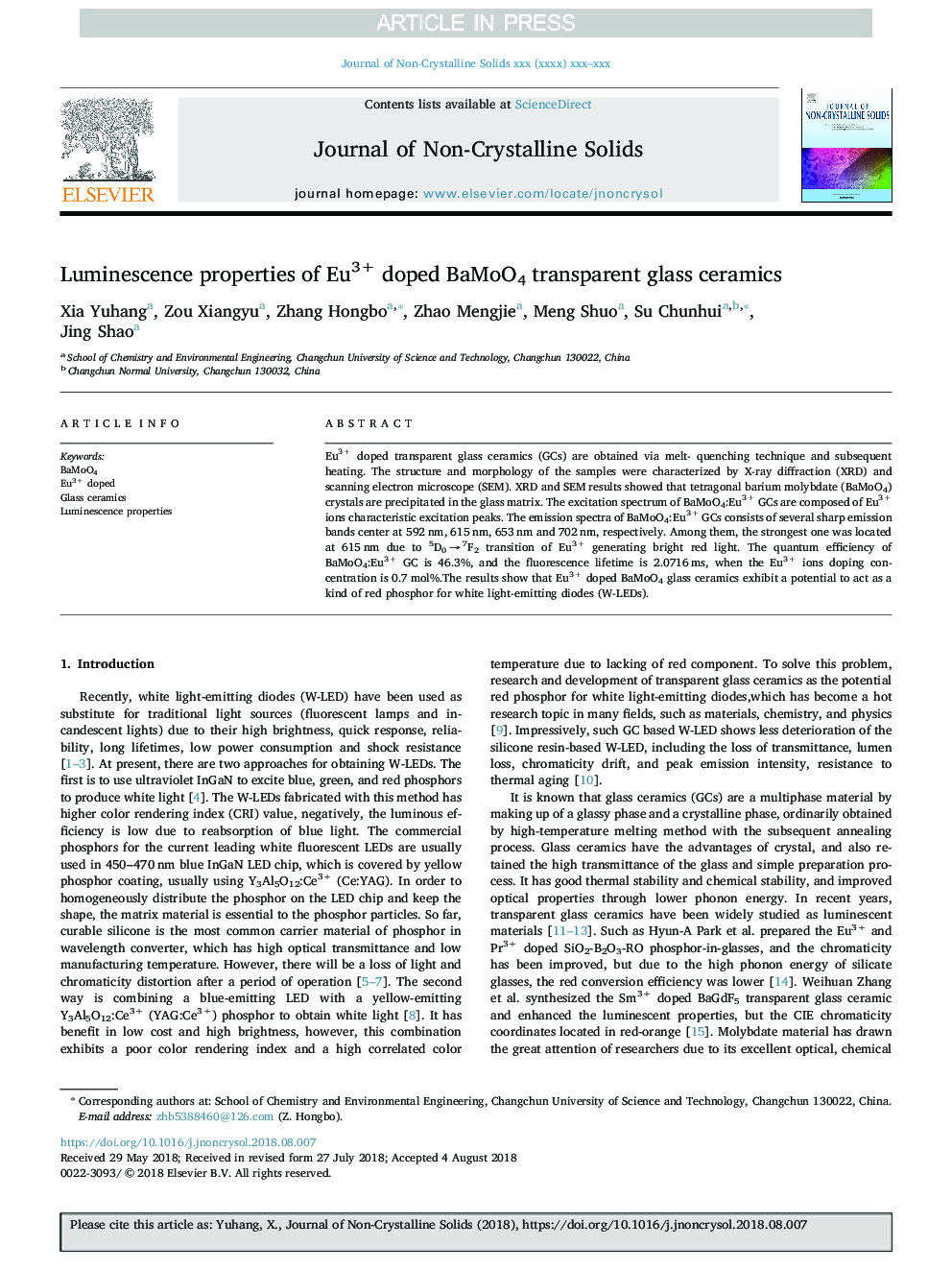| Article ID | Journal | Published Year | Pages | File Type |
|---|---|---|---|---|
| 10155550 | Journal of Non-Crystalline Solids | 2018 | 6 Pages |
Abstract
Eu3+ doped transparent glass ceramics (GCs) are obtained via melt- quenching technique and subsequent heating. The structure and morphology of the samples were characterized by X-ray diffraction (XRD) and scanning electron microscope (SEM). XRD and SEM results showed that tetragonal barium molybdate (BaMoO4) crystals are precipitated in the glass matrix. The excitation spectrum of BaMoO4:Eu3+ GCs are composed of Eu3+ ions characteristic excitation peaks. The emission spectra of BaMoO4:Eu3+ GCs consists of several sharp emission bands center at 592â¯nm, 615â¯nm, 653â¯nm and 702â¯nm, respectively. Among them, the strongest one was located at 615â¯nm due to 5D0â¯ââ¯7F2 transition of Eu3+ generating bright red light. The quantum efficiency of BaMoO4:Eu3+ GC is 46.3%, and the fluorescence lifetime is 2.0716â¯ms, when the Eu3+ ions doping concentration is 0.7â¯mol%.The results show that Eu3+ doped BaMoO4 glass ceramics exhibit a potential to act as a kind of red phosphor for white light-emitting diodes (W-LEDs).
Related Topics
Physical Sciences and Engineering
Materials Science
Ceramics and Composites
Authors
Xia Yuhang, Zou Xiangyu, Zhang Hongbo, Zhao Mengjie, Meng Shuo, Su Chunhui, Jing Shao,
